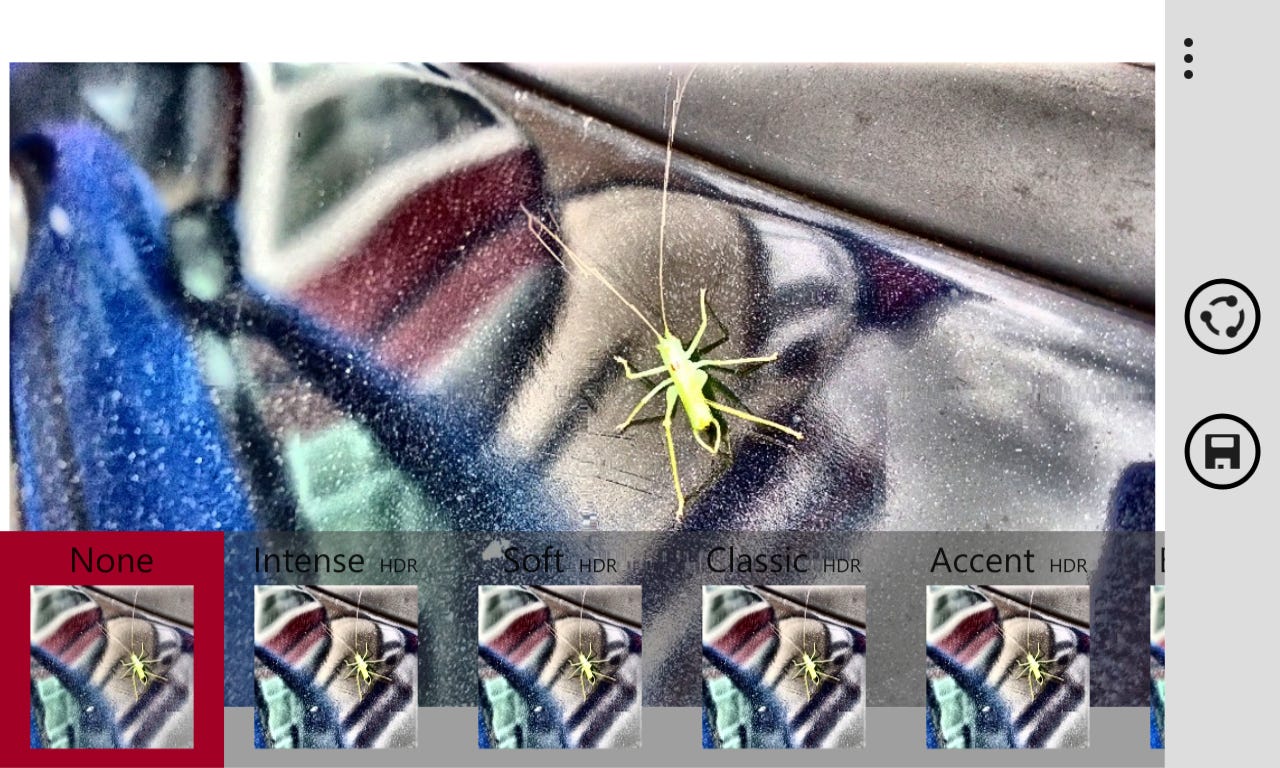Computing the camera: The future of smartphone photography is in the software

There's been a great evolution in digital photography, and one which I can easily trace through my own use: from my first low-resolution digital camera, to building an online photography platform, to my forays into using tools like Lightroom to improve my DSLR. In all those years, I've always carried a pocket camera — after all, you don't know what you won't see when you're out and about.

But over the past year that's changed, and now my pocket camera sits on a shelf in the office. Instead, I'm using my phone as a camera. After all, it's always going to be in my pocket, and it's a lot smaller than most cameras are.
I've been using a smartphone for years, and taking photographs with one for as long. Back when I had the original Orange SPV (also known as the HTC Canary) I wrote my own mobile blogging tool that would read a folder on a mailserver where I filtered MMS messages, parse the message bodies, extract the image content, and post them on LiveJournal. So when Instagram came along and became an instant success I wasn't surprised — I was interested in sharing my casual photography with the world back in 2002, and the world followed suit soon enough.
But what's really converted me to the world of smartphone photography isn't its ease of use or ease of sharing. It's the fact that it's no longer pretending to be just the same as film.
The film metaphor is a persistent one in photography. There've been plenty of attempts to displace it, but none have really caught the public imagination. But things have changed over the past couple of years, as apps such as Instagram have become more and more popular. While Instagram mimics film and photographic lenses in a way that my pocket camera never could, it's doing it in a new way: through software.
Instagram brings some of the tricks and techniques we used to use in Photoshop to mobile phones, distilling them down to a handful of filters and frames that can be applied to a photograph. There's no longer a need to connect up a camera to a PC, copy files to a hard disk, and no call for extra processing stages (even though I still enjoy doing that with my DSLR images).
Instead, it's all on the phone — from focus to picture to processing to sharing. It's not alone in offering such functionality, and joins a selection of tools that allow users to instantly apply HDR effects, construct 360-degree panoramas, capturing the right moment in a sports game, or make time lapses.
They're all tools I'd have found in Photoshop or Lightroom, but now split up and spread across various phone apps. That's a considerable time-saving, and one that's changed the way I think about photography.
Now photography is about more than just framing, it's about the story I'm telling. It's no longer point and shoot, it's also spending time waiting for the right moment to turn into an animated image — and choosing the sections of a video to leave still.
Smartphone photography may not meet the needs of the purist, but it works, and the addition of software to the equation changes the game.
While I've switched from Windows Mobile to BlackBerry to iPhone to Android and back to Windows Mobile, I've found my collection of photography apps growing. Now on my Lumia 920, I've started taking advantage of Windows Phone's Lenses feature.
With my iPhone if I needed to take a photograph in an app, I had to open each app separately. With Windows Phone's Lenses all I need to do is click my phone's dedicated camera button, tap on the screen once and I'm able to select the photography app I want to use without having to go back to the start screen and the app menu.
That's a big win for me, as I can quickly select the tool I want while I'm thinking about the image I want to grab. HDR for effects? A picture with an overlay of the current weather? An animated gif? An Instagram image, or a Vine? An image to sketch on, or one to OCR? A 3D sphere of images, all aligned automatically using my phone's sensors? They're all there, all using the power of my pocket computer to take images, process them, and then share them wherever I want.
Is this the computational photography future? Not quite.
We're still playing with film metaphors, still ignoring the full capabilities of the computer in our pockets and its array of sensors. It's a journey, and one that's going to take time — but looking at the apps on my phone, it's one we've certainly begun.